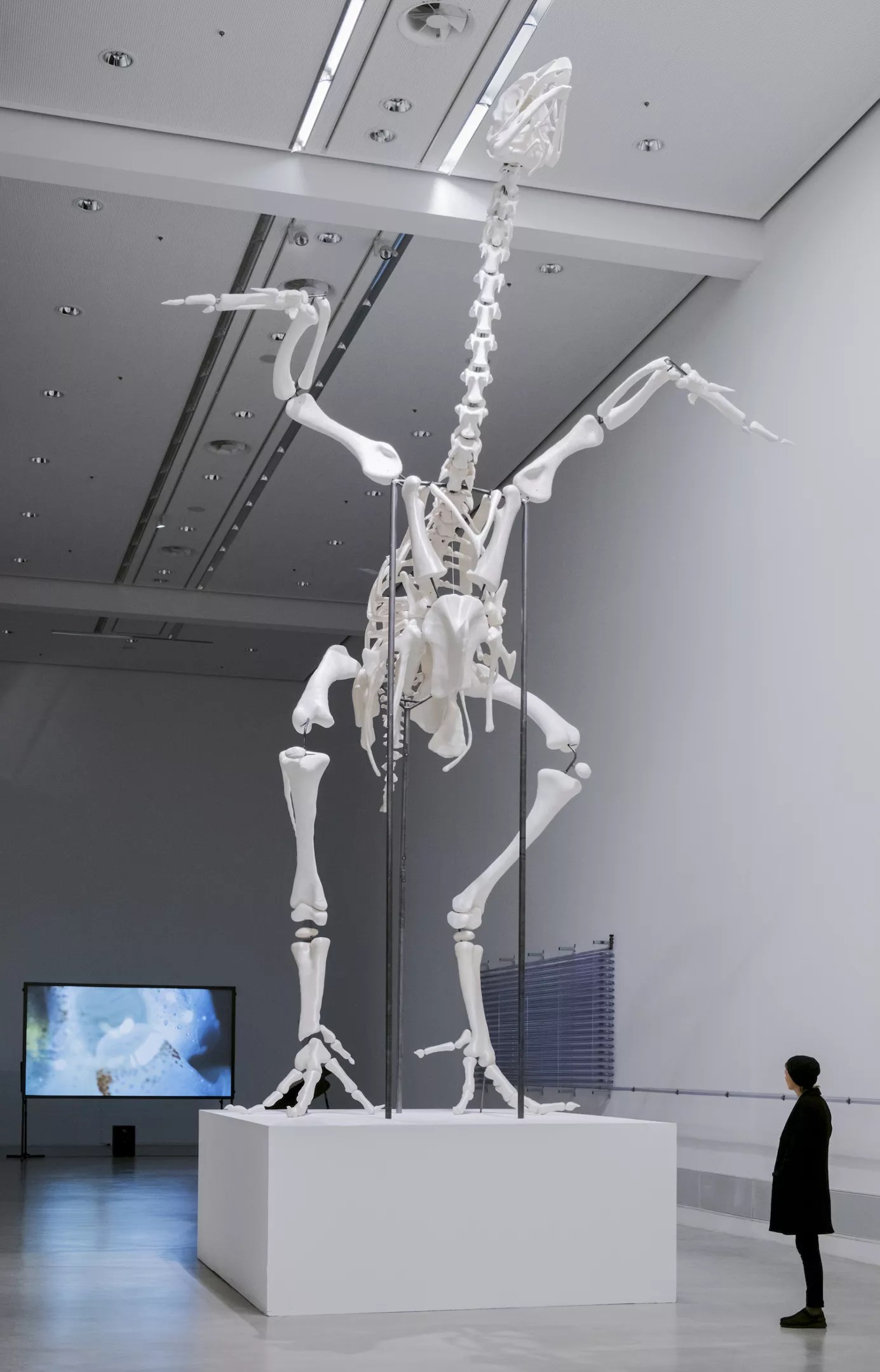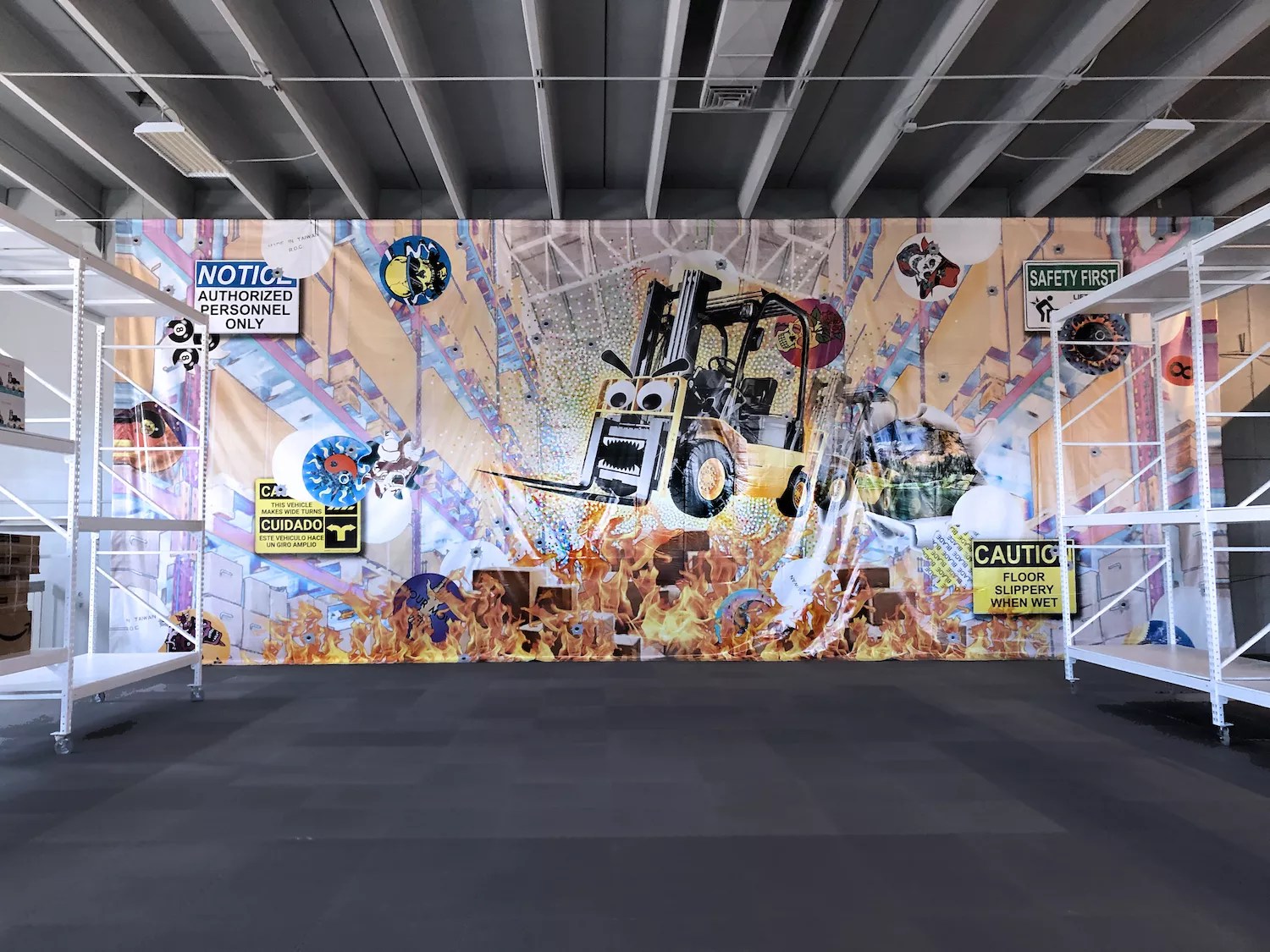
Courtesy of Black Cube

Audio By Carbonatix
When philanthropist Laura Merage launched the Black Cube Nomadic Museum in 2015, handing the curatorial reins to Cortney Lane Stell, Stell had a steep learning curve as director and chief curator of a burgeoning institution with no permanent space. Though curation came easily to her, she wasn’t prepared for the administrative roadblocks raised by a museum with no physical structure. Over the years, Black Cube has popped up at Red Rocks Amphitheatre, in a parking garage, on the 16th Street Mall, at the Denver Wastewater Facility and in still more difficult-to-access public spaces – but not without a whole slate of explanations, negotiations and red tape.
The founders conceived Black Cube as a museum that would shepherd free creativity unbound by the strictures of the white cube, or traditional gallery. Unlike many arts institutions, this museum would not be controlled by commerce. Just as DIY communities have sheltered young artists experimenting with their practices, Black Cube grants artists freedom by refusing to issue hard rules about making art. The museum asks, “What do you think? How would you express this concept?” not “Why don’t you try it my way?” And with that concept in mind, Black Cube brings together an international network of artists radiating friendship and ideas.

Black Cube Headquarters rises in an Englewood warehouse.
Courtesy of Black Cube
And now Black Cube has planted roots: A brick-and-mortar Black Cube Headquarters, dubbed BCHQ, will make its public debut on Saturday, September 13, in a 10,000-square-foot Englewood warehouse. It means that Stell and the artists she champions can get back to the basics of curating and making art. Think of it not as a traditional, static museum, but as an “open-all-the-time, dynamic and flexible incubator space, where big ideas can come to fruition,” Stell says.
This year, make your gift count –
Invest in local news that matters.
Our work is funded by readers like you who make voluntary gifts because they value our work and want to see it continue. Make a contribution today to help us reach our $50,000 goal!
The advent of BCHQ doesn’t mean that Black Cube’s ideas will become tied to one central place. Even as we discuss the headquarters in late August, Stell is preoccupied with the tricky logistics of placing a massive chicken skeleton by German sculptor Andreas Greiner inside the Denver Central Library as part of Black Cube’s ongoing Monumental project with the Denver Theatre District. The 24-foot-tall sculpture, “Monument for the 308,” had been held up in customs and would be arriving later than expected.

Black Cube brought Andreas Greiner’s “Monument for the 308” – shown here in an installation view at Berlinische Galerie in 2016, – to the Denver Central Library as part of Monumental.
Andreas Greiner
Stell views BCHQ as an investment in the Denver arts community and as a solution to some of her headaches. “Here we have the safety of a space to produce large-scale, ambitious work,” she says. “When we produce site-specific work, there are a lot of variables. Black Cube just started with artists’ ideas, but in reality, there are more negotiations. If we don’t own the sites, we have to negotiate and make legal agreements. The amazing thing about this space is the ability to have a place where we can be nomadic or experimental in other ways without having to wrestle with challenges. For Black Cube, it’s an immense resource for producing art at a large scale experimentally.”
And that’s a theme that crosses over into BCHQ’s inaugural exhibition, The Fulfillment Center, a play on the idea of multibillion-dollar retail E-commerce sites like Amazon that operate out of giant warehouses.
“With E-commerce, we click buttons on a desire machine, and whatever we want arrives on the doorstep,” Stell says. “We’re becoming more sequestered into the role of being consumers. I think the problem in that is that it makes us more docile, less able to understand and impact the structure of our world.” But she maintains hope: “Poetry and artwork are the best ways to digest the world around us. Artists help us around that.”

Zach Reini,
Zach Reini
As an exhibition,The Fulfillment Center remains true to original Black Cube directives. Stell explains: “As with most group exhibitions I organize, I’m using a mixture of international, national and local artists. I think it’s important, because it helps build exchange networks and foster diversity of ideas.” Every work in the show is a commission, ensuring that the artists are paid for their efforts. “It’s a more ethical way to support artists – by supporting production of new artworks financially,” Stell adds.
“The Fulfillment Center relates to the context of warehouses, and how the role and function of warehouses in E-commerce has become a main aspect of how we function in the world,” Stell continues. BCHQ was fitted for the show with typical warehouse palette racking and industrial shelves painted a monochromatic white as an environment for the eighteen invited artists to transform.
“We talked with each artist about the intellectual underpinnings and let them run with it,” Stell says. “Every artist had a different perspective.” Consider Zach Reini’s 20-by-45-foot, large-scale mural that’s central to The Fulfillment Center‘s presentation, she notes: “I love to grow and stretch artists, to challenge them to produce work in new scales and materials, and this was about scale, with its ridiculous sentient forklift leaping out of the canvas.”
It’s been as much of a learning opportunity for Stell as it has been for the artists, and she’s looking forward to exciting new challenges in her changing role in steering raw creativity in new directions.
“As the organization is continuing to grow and change, we have to be flexible,” she says. “The establishment of a headquarters is a crucial point of growth. We’re like an amoeba – shapeless until the artist gives it shape. And it’s not like a building or a gallery. We’ve stayed true to our vision.”

One of 100 text sculptures placed by Black Cube for Anuar Maauad’s SHARE installation series in the Denver metro area, 2019.
Anuar Maauad
How is that vision working out? Stell’s world is spinning: In addition to opening BCHQ, which will have public hours and require staffing accordingly, she’s still rolling out Monumental, a large-scale critical look at what public monuments mean to the city’s residents who live among them. She’s also actively facilitating Mexico City-based artist Anuar Maauad’s Share project, which involves the placement of 100 small-scale bronze text installations with a quote from a song by Marvin Gaye: “To share is precious, pure and fair.”
And nascent ideas are still forming in Stell’s mind as she looks forward: Internet-based projects and showcases for underrepresented communities, building Black Cube’s international dynamic. True to the BCHQ concept, she’s incubating plans for that space, too, focusing on warehouses as storage facilities for artists. Black Cube will always have new frontiers to cross, she says: “That’s the beauty of producing art in the wild.”
Attend the free grand opening of BCHQ and reception for The Fulfillment Center on Friday, September 13, from 6 to 10 p.m. at the warehouse, 2925 South Umatilla Street in Englewood. On Saturday, September 14, Black Cube will host a series of panel discussions with artists from the exhibition from noon to 2:30 p.m. and a lecture by Jesse LeCavalier, author of The Rule of Logistics: Walmart and the Architecture of Fulfillment, at 3 p.m. RSVP for these events and learn more about Black Cube at the website.